Deep in the Andes mountains of Columbia, Julio Leon is building a three-room house made mostly out of earth. To make the walls, Leon shovels damp earth in between two wooden panels. Then, he climbs on top of the 3-foot-tall pile and pounds it repeatedly with a wooden ram, turning his mound into a sturdy wall. “These walls will last for generations,” said Leon, who has been working with earth buildings for the past four decades.
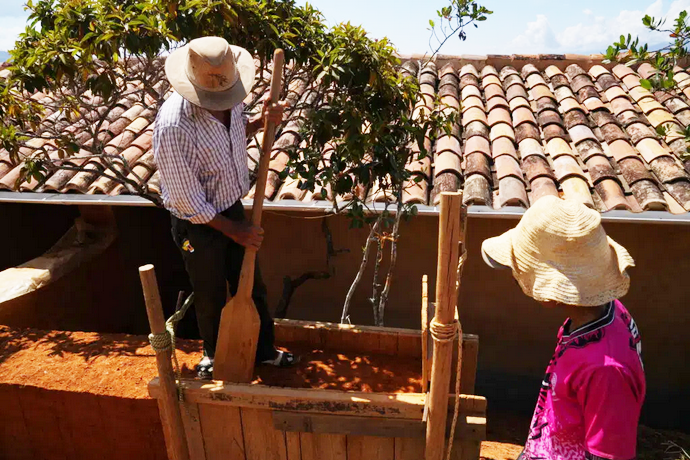 Rammed earth was one of the more popular ways of building homes in rural Colombia until the mid-20th century when houses made of brick or cement became more common. But homes with earthen walls are making a comeback in Colombia as engineers and architects look to make houses that are comfortable but less carbon intensive.
Rammed earth was one of the more popular ways of building homes in rural Colombia until the mid-20th century when houses made of brick or cement became more common. But homes with earthen walls are making a comeback in Colombia as engineers and architects look to make houses that are comfortable but less carbon intensive.
“Bricks or cement must be burned in big furnaces and that leads to greater carbon emissions,” said Santiago Rivero, a civil engineer in Columbia. Walls made of earth have a minimal environmental impact because they basically dry out in the sun.
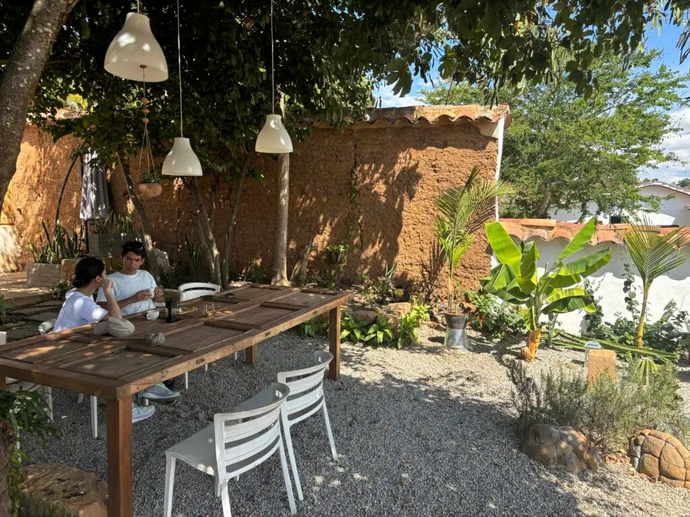 Earth walls are also good at keeping homes cool during the day and storing heat at night, making them more energy efficient. “With earth walls, you need 50% less fuel for heating in the winter,” Rivero said. “And you also reduce the need for air conditioning.”
Earth walls are also good at keeping homes cool during the day and storing heat at night, making them more energy efficient. “With earth walls, you need 50% less fuel for heating in the winter,” Rivero said. “And you also reduce the need for air conditioning.”
But making houses from rammed earth is slower and more labor intensive. And it also requires more space. Walls made from rammed earth have to be at least 15 inches thick to hold up.
 A factory in Bogotá makes small blocks of earth on a large scale. They look like bricks, and they’re used to make the walls of homes or apartment buildings that have cement or iron frames. Workers make the 12-inch-long blocks by dumping a mix of damp soil and a little cement into a press to make the blocks more resistant. The blocks are covered in a plastic tarp and left to dry under the sun. “Because these blocks have not been cooked they can absorb humidity and help to regulate temperature,” says a factory spokesperson.
A factory in Bogotá makes small blocks of earth on a large scale. They look like bricks, and they’re used to make the walls of homes or apartment buildings that have cement or iron frames. Workers make the 12-inch-long blocks by dumping a mix of damp soil and a little cement into a press to make the blocks more resistant. The blocks are covered in a plastic tarp and left to dry under the sun. “Because these blocks have not been cooked they can absorb humidity and help to regulate temperature,” says a factory spokesperson.
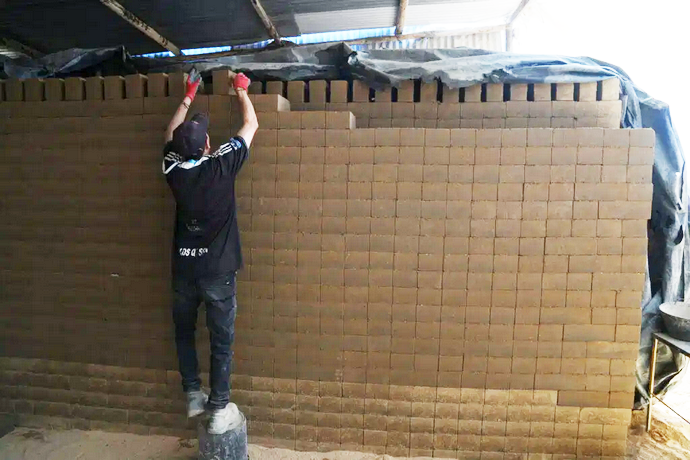 It has been hard to convince some constructors to buy these blocks of compressed earth, because many see the material as “dirty” or associate earthen walls with poverty. But demand for compressed earth blocks has been growing over the past 10 years. These blocks are currently being used to make a large housing development in a wealthy suburb of Bogotá that has more than 100 homes.
It has been hard to convince some constructors to buy these blocks of compressed earth, because many see the material as “dirty” or associate earthen walls with poverty. But demand for compressed earth blocks has been growing over the past 10 years. These blocks are currently being used to make a large housing development in a wealthy suburb of Bogotá that has more than 100 homes.
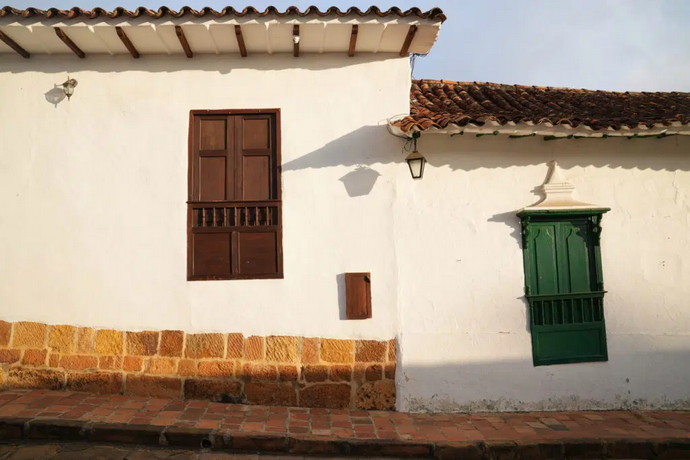 The cobbled stone streets in Barichara are lined with rammed earth buildings covered in white limewash paint, which have breezy courtyards and large windows that date back to the 18th century.
The cobbled stone streets in Barichara are lined with rammed earth buildings covered in white limewash paint, which have breezy courtyards and large windows that date back to the 18th century.
Many people who move into the town to retire or buy a vacation home are asking for their houses to be built in this style, said local architect Natalia Rey. “Now, there is more value for this type of architecture because more people are demanding it,” Rey said. “It has become an economic alternative, so young people really want to learn these techniques. We are developing a modern kind of rammed earth architecture,” she said. “It’s like a mix between the traditional way of looking at the houses, but also with the comfort of the new houses.”
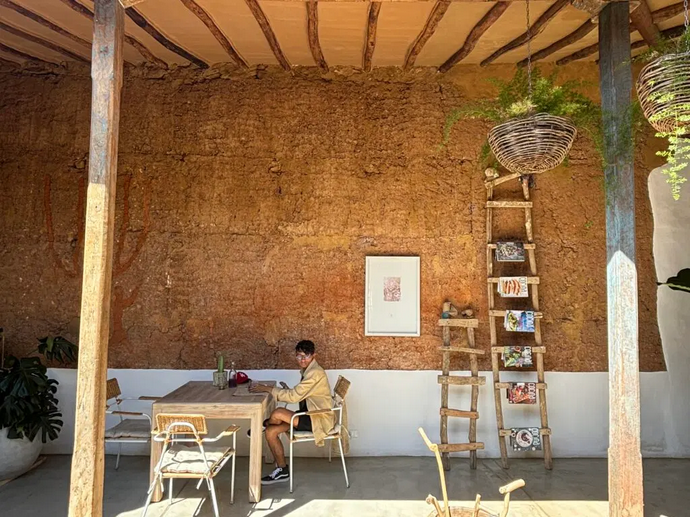 Rey said that while rammed earth may not be suitable for all climates or places, its revival in Columbia provides a lesson to those seeking more environmentally conscious ways of making homes and buildings. “We need to find local solutions to global problems,” she said.
Rey said that while rammed earth may not be suitable for all climates or places, its revival in Columbia provides a lesson to those seeking more environmentally conscious ways of making homes and buildings. “We need to find local solutions to global problems,” she said.
You can read the original article at theworld.org
